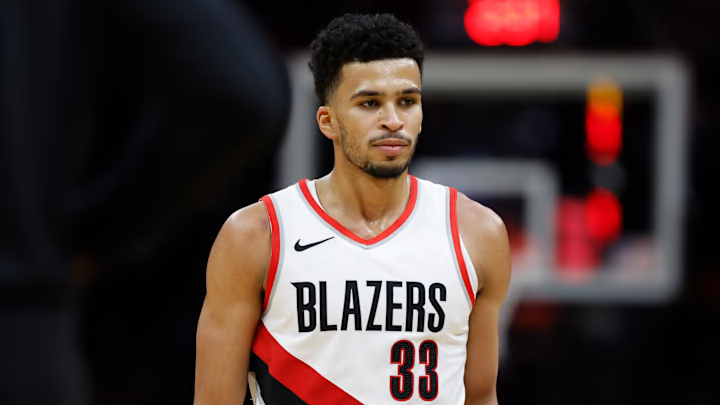Injuries and roster turnover set the Portland Trail Blazers up for a disappointing season. On the court, turnovers and a lack of shooting have marred the Blazers’ play.
However, the team may have turned a corner after losing to the Phoenix Suns on Nov. 21, the last loss of its eight-game losing streak. Since then, the Blazers have won three of six, including back-to-back road wins at Indiana and Cleveland, and held leads for significant portions of the games they lost.
Portland's struggles have a clear diagnosis: The team is last in offensive rating, last in assist-to-turnover ratio and second-to-last in true shooting percentage. Analyzing recent improvements in the team’s play reveals some positive developments that may have been bubbling beneath the surface of the ugly eight-game losing streak.
Here are three sneaky bright spots from the Blazers’ recent play that should offer fans some reason for optimism.
The Portland Trail Blazers’ active defense
On Nov. 30, Portland secured a convincing road win over the Cleveland Cavaliers. The driving factor behind the win probably seemed unfamiliar to fans: the Blazers’ stifling defense.
From the tip-off, the rhythm of the contest felt disjointed and erratic, characterized by errant passes and out-of-control dribbling. As the Blazers’ offense—led by Shaedon Sharpe’s 29-point double-double—found a groove in the third quarter, the Cavaliers’ offense remained disjointed.
Uncharacteristic sloppiness likely played a role, but the disruptiveness of the Blazers’ length and defensive activity stood out.
Between Matisse Thybulle, Toumani Camara and Jerami Grant, the Blazers’ perimeter defenders shrank the floor, closing off driving lanes and limiting passing angles. Deandre Ayton’s presence as a rim protector and Duop Reath’s mobility served as useful deterrents around the paint. Constant deflections kept the Cavaliers’ offense off-kilter.
Portland’s disruptive defense against Cleveland was not an anomaly. The Blazers rank second in deflections this season. They're 11th in defensive rating, and over their past six games, the Blazers boast the third-best defensive rating in the league.
When you isolate for half-court possessions, the team's defensive performance appears even more impressive. The Blazers held the eighth-best half-court defense in the league on Dec. 4, anchored by frequent and effective switching, as noted by analyst Nekias Duncan.
The Blazers’ stable of strong guards allows them to play a switchable scheme. Malcolm Brogdon holds up well against bigger players. Although he’s struggled in other areas defensively, Scoot Henderson’s strength has helped him thwart opposing players from exploiting his size in the post. Shaedon Sharpe’s length has served as another disruptor in passing lanes.
Arguably the most significant coaching change behind the Blazers’ defensive ascendance was Chauncey Billups’ decision to insert Camara into the starting lineup. Shifting Thybulle’s minutes has helped stabilize the second unit’s defense, but Camara’s emergence as the team’s best on-ball defender stands out as the most important element in the Blazers’ improved play.
